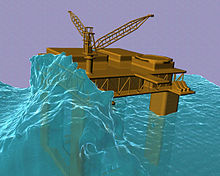光滑粒子流体动力学
光滑粒子流体动力学(英语:smoothed-particle hydrodynamics, SPH)是一种用于模拟连续介质动力学的计算方法,如固体力学和流体流动。 它由Gingold和Monaghan(1977)和Lucy(1977)提出,最初用于天体物理问题。 此方法已被用于许多研究领域,包括天体物理学,弹道学,火山学和海洋学。 它是一种无网格的拉格朗日方法(即坐标系与流体一起移动),并且方法的分辨率可以容易地相对于诸如密度的变量进行调整。
方法
光滑粒子流体动力学方法将连续流体分成一组称为粒子的离散元素。 这些粒子具有空间距离(称为“光滑长度”,通常由h表示),携带了其所在位置的流体的性质,如质量、密度、速度、能量等。
参考资料
- Gingold, R. A.; Monaghan, J. J. Smoothed particle hydrodynamics: theory and application to non-spherical stars. Monthly Notices of the Royal Astronomical Society (Oxford University Press (OUP)). 1977, 181 (3): 375–389 [2017-05-05]. doi:10.1093/mnras/181.3.375.
- Lucy, L. B. A numerical approach to the testing of the fission hypothesis. The Astronomical Journal (IOP Publishing). 1977, 82: 1013 [2017-05-05]. doi:10.1086/112164.
- 刘, 桂荣. 光滑粒子流体动力学: 一种无网格粒子法. 湖南大学出版社. 2005. ISBN 9787810539982.

